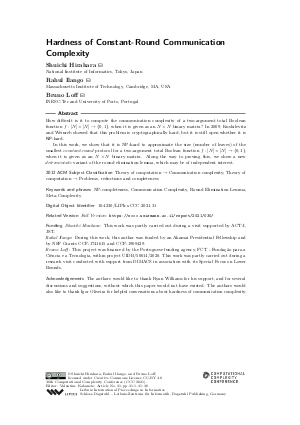LIPIcs.CCC.2021.31.pdf
- Filesize: 0.86 MB
- 30 pages

 Creative Commons Attribution 4.0 International license
Creative Commons Attribution 4.0 International license

































































Feedback for Dagstuhl Publishing